Earliest Indigenous Teachings
Indigenous Way of Life Introduction
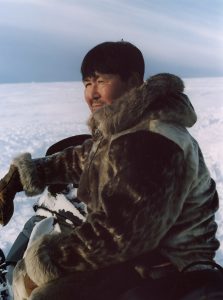
It is important to remember that we can’t oversimplify indigenous culture and assume they are all similar. There are many different Inuit, First Nations, and Metis cultures all with their own unique customs, languages, skills, and beliefs. In fact, differences in cultural practices can be seen in different geographical regions. Think about your country. How are people different in various locations, cities and states in your country? How are East Coast Canadians, different from Quebecors, Ontarians, or those from the West?
The topics we will cover focus on very general similarities.
Listening: We are All Treaty People
Watch the video We Are All Treaty People Part 1 (3 mins) on YouTube
Listen and Take Notes
- What was Anishnaabek society like before contact with the Europeans?
- What were some of their key beliefs?
- What were some of their spiritual beliefs?
- What were their roles within the family and community?
- How did they treat the land? What was their relationship to the land?
- What would hunters do after they caught an animal for food?
Indigenous Relationship to the Land
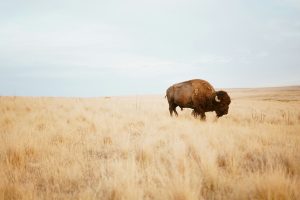
Indigenous peoples have always had a strong relationship to the land and with nature. Their relationship to the land was different than the relationship Europeans and colonizers had. The Indigenous did not believe in ownership of the land.
The land and nature provided the Indigenous people everything they needed including food and shelter, therefore they had a great respect for nature. If an animal was killed for food, a prayer and an offering was made to The Great Spirit, and all parts of the animal was used because First Nations people believed in only taking what they needed to survive. First Nations people always saw themselves as connected to nature and not a separate group meant to conquer or control nature.
How is the Indigenous relationship to land and nature different from our way of life today?
Education
Think about the following questions:
- What is ‘teaching’?
- What is ‘learning’?
- What is the goal of education?
- How does our formal education influence us in how we view our place in the world?
The Indigenous peoples believed that everything is a teacher: an eagle, a tree, a fish, or even a baby! They believed we can learn something from everything around us! Everything could teach us a lesson or something of value on how to live and be a part of the world in a positive way.
Elders
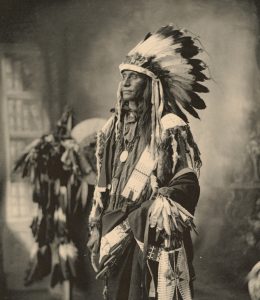
Elders are community members who are greatly respected because of their knowledge and wisdom. Elders hold wisdom and insight into the traditions and customs of the culture. They have earned their status in the community regardless of gender or age. Elders have special privileges like being able to teach special traditions, tell certain stories or lead certain ceremonies and traditions.
What role do elders have in your culture? Is it similar to Indigenous cultures or different? How would you compare the role of elders in Indigenous cultures and the role of elders in today’s society?
Storytelling
Storytelling was a way to connect people to their past, present and future, and each story could give a lesson, values, history, and cultural identity. Each community and First Nations has its own unique stories and only people from these specific groups would tell those special stories. In fact, certain stories could only be told by elders because each detail must be remembered and shared exactly the same way it had always been so that it does not change from generation to generation. Many of the stories included geographical locations and nature from that area such as the mountains or rivers nearby, so in order for the listener to truly understand the story, they would have to be from the local area where the story comes from. These stories were used to show the importance of nature, the balance with nature, the roles of each animal, what is right and wrong, or even stories about great adventures. Children hearing these stories grow up to learn who they are and their place in the world.
The following video is a story titled “How the Raven Stole the Sun”.
Are there any stories that have been passed down in your culture? If yes, what was the purpose or significance of the story?
Experiential Learning
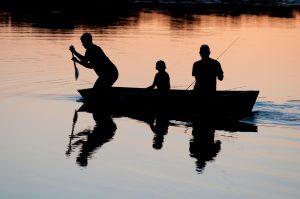
Before colonization, Indigenous children did not go to a formal school. Rather, teaching and learning took place all day at home or in their communities. They learned by doing, watching, and experiencing, because what was to be learned was how to survive, and be a member of their community and family. Children would spend the day with family members observing various skills and listening to information and knowledge, and eventually learn to practice these skills themselves. All of this learning involved many of the subjects we learn in school today such as math, measurements, biology, physics, chemistry, and more! For example, children would learn how to fish differently depending on which type of fish you wanted to catch. Children could also learn how to weave and create clothing from animal furs and skin (Centennial College, n.d.; LISTN, n.d.)
Discussion
- In traditional Indigenous cultures, what was the purpose of education?
- Where and when did teaching take place?
- How would you compare experiential learning to the way we learn in schools today? What are the advantages of experiential learning?
Indigenous Teachings
The 7 Grandfathers
Sometimes called “The 7 Grandmothers” or “The 7 Sacred Teachings”, The 7 Grandfathers are seven sacred values that form the basis of how each person should treat others and their community. The 7 Grandfathers are teachings that show us the meaning of life and how to live well in this world. Each of the teachings is associated with an animal (Centennial College, n.d.b; Gifts of Seven Grandfathers, 2023).
Watch the following video describing each sacred teaching.
Watch The Seven Teachings Narrated by Glen Knockwood (4 mins) on YouTube
Video source: Mi’kmaw Family. (2020, July 29). The Seven Teachings narrated by Glen Knockwood [Video]. YouTube. https://youtu.be/4PRAot3IzzE
Read more on the Seven Grandfathers Teachings in this Open Educational Resource created by George Brown College.
The Medicine Wheel
The Medicine Wheel is a representation used in teaching about the values, sacred elements, and spirituality. Different First Nations have a slightly different version of the medicine wheel, but none are wrong. Each quadrant represents the 4 elements (air, earth, water, fire), the nature of a person (spiritual, mental, physical, and emotional), the 4 sacred grasses (cedar, sage, tobacco, and sweetgrass), the 4 cardinal directions (north, east, south, and west), the 4 seasons (winter, spring, summer, and fall), the 4 stages of life (child, youth, adult and elder), and much more! It is in the shape of a circle because the Indigenous believe that there is no beginning and end, but rather everything is connected and continuous (Centennial College, n.d.c.).
Watch What is the medicine wheel (Medicine wheel teachings 101) (5 mins) on YouTube to learn more.
Video source: Mallory Rose. (2020, June 19). What is the medicine wheel? (Medicine wheel teachings 101) [Video]. YouTube. https://youtu.be/S7nb4rJ_N14
Read more about the Ojibwa medicine wheel through this interactive open educational resource by George Brown College.
Discussion
- Which area of the wheel represents your stage in life?
- In the video, what are the 3 main points to understanding the medicine wheel? Briefly describe each.
- What was a belief from the medicine wheel that is similar to yours?
Further Activities
Legends of the Kwakwaka’wakw: The Elk and the Little Wren
Listen to Legends of the Kwakwaka’wakw: The Elk and the Little Wren on the CBC Radio website, from minute 15:50-24:24 in the audio file.
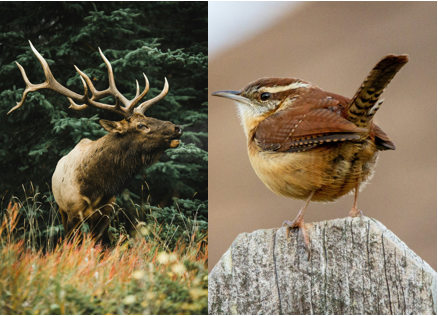
Before you listen…
- moral
- legends
- snort
- nostrils
- trail
- hooves
- bounce
- bully
- cedar
Put the events in order:
- The wren and the elk meet on the trail.
- The elk won’t move over for the wren.
- The wren bounces and hops on the elk’s hooves.
- The elk snorts the wren up his nose.
- The wren escapes out of the back of the elk.
- The elk snorts the wren up his nose for the last time.
- The wren builds a fire in the elk’s stomach.
- The elk dies.
- The villagers go to the trail to see the elk.
- The villagers have a feast.
Reflect
- What is the main conflict or problem in the story?
- How is the conflict resolved?
- What are the lessons or morals of the story?
Attribution & References
Except where otherwise noted, this page is written by Sari Martin, licensed under CC BY-NC 4.0.
References
Reading pieces on this page were written by Sari Martin and inspired by the following resources:
Centennial College. (n.d.a.). Indigenous Leadership In Our Stories: First Peoples of Canada. eCampus Ontario Open Library. https://ecampusontario.pressbooks.pub/indigstudies/chapter/indigenous-leadership/
Centennial College. (n.d.b.). Seven Grandfather Teachings In Our Stories: First Peoples of Canada. eCampus Ontario Open Library. https://ecampusontario.pressbooks.pub/indigstudies/chapter/seven-grandfather-teachings/
Centennial College. (n.d.c.). Four Direction teachings In Our Stories: First Peoples of Canada. eCampus Ontario Open Library. https://ecampusontario.pressbooks.pub/indigstudies/chapter/four-direction-teachings/
LISTN. (n.d.). CLB6 – Traditional Aboriginal Education. https://listn.tutela.ca/wp-content/uploads/CLB6-Education-SS-2014-07-29.pdf
The Gifts of the Seven Grandfathers. (2023, October 19). Ojibwe.net. https://ojibwe.net/projects/the-gifts-of-the-seven-grandfathers/

